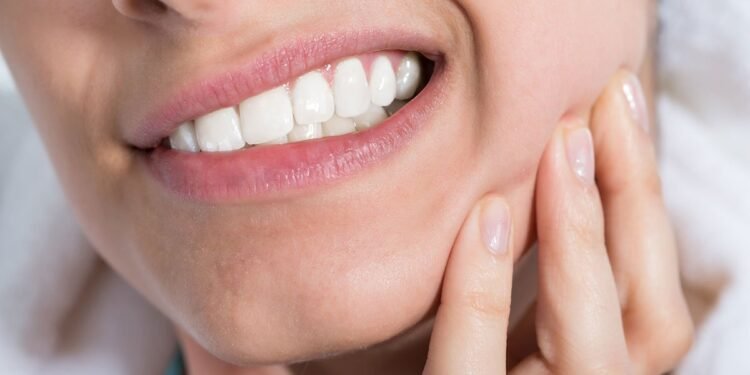How to apply gauze to wisdom teeth? Wisdom teeth removal surgery can be a daunting experience, but with proper care and attention, you can ease the healing process and minimize discomfort. One crucial aspect of post-surgery care is the application of gauze to the surgical sites. This article will walk you through applying gauze to wisdom teeth after surgery and provide valuable tips for a smooth recovery.
The First Hour After Surgery
Immediately after your wisdom teeth removal surgery, your dentist or oral surgeon will place gauze in your mouth to control bleeding. It’s essential to keep firm pressure on the surgical site with this gauze for the first hour. After this time, you can remove the gauze.
How To Apply Gauze To Wisdom Teeth?
If bleeding continues after the first hour, take a piece of gauze, fold it in quarters to create a firm pad, and place it over the surgical site. If possible, apply strong biting or direct finger pressure by holding the gauze for a biopsy site. You may need to repeat this procedure several times until the bleeding stops, typically within 2-3 hours.
Sometimes, you may experience blood-tinged saliva for up to 24-48 hours following surgery. If bleeding is heavy or persists after 2 hours, moisten a tea bag, place it on the surgical site, and apply pressure or bite firmly for 30 minutes. This often effectively stops the bleeding. It’s important to remember that most bleeding can be controlled with well-positioned gauze or a tea bag with direct pressure. If heavy bleeding persists after 24 hours, contact your doctor. Avoid rinsing, spitting, or using a straw on the day of surgery to prevent bleeding from resuming.
Reducing Swelling
Swelling is a common side effect of wisdom teeth removal surgery. To reduce swelling, apply ice packs to your face for 20-minute intervals, with 20 minutes of rest. If both sides of your mouth underwent surgery, alternate sides every 20 minutes for the best results. Avoid applying ice for over 20 minutes in one area to prevent tissue injury. Swelling usually peaks two days after surgery. To further reduce swelling, sit semi-reclined in a reclining chair or elevate your head with 2-3 pillows if lying down. Remember to discontinue icing after 24 hours, as prolonged icing can increase swelling.
Orthodontic Retainers
If you wear orthodontic retainers, refrain from using them immediately after surgery. You can resume using your retainers 1-3 days after the procedure or when you feel comfortable doing so.
Diet
After surgery, you can resume your diet. Start with a milkshake, smoothie, or other thick liquid using a spoon instead of a straw. Stick to cool and soft foods for the first day to avoid any potential burns due to numbness from local anesthesia. You can gradually reintroduce your normal diet as tolerated. Most foods are acceptable, but be cautious around the surgical sites. Some softer food options include pancakes with syrup, eggs, and pastas like macaroni and cheese or spaghetti.
Oral Hygiene
Maintaining good oral hygiene is essential during your recovery. Begin rinsing with warm salt water or tap water three days after surgery. Mix one teaspoon of salt with 4-5 oz of warm water to make a saltwater rinse. Rinse thrice daily: in the morning, after meals, and before bedtime. Avoid gargling. If you were provided with a plastic irrigating syringe after extractions, use it three days after the procedure. Gently irrigate only the lower extraction site(s) once daily with tap or salt water to remove any lingering food debris. Continue until all debris is removed. Do not use over-the-counter mouthwash. You can resume brushing your teeth the day after surgery, being careful to avoid the surgical sites. It’s normal to see traces of blood on your toothbrush during this time.
Activity and Smoking/Vaping
Limit physical activity for the first few days after oral surgery. Vigorous exercise or organized sports should be avoided until 3-5 days after surgery or as your healthcare provider advises. Smoking and vaping should be refrained from for as long as possible, as nicotine can delay healing and increase postoperative pain.
Stitches
If you have stitches, they are usually dissolvable and will fall out on their own within the first four days, possibly longer. It’s not uncommon for one or more stitches to loosen and fall out before dissolving, especially in areas that move a lot, such as the tongue or cheek. If stitches come out and a small hole forms, it’s not a cause for concern unless excessive bleeding occurs. Mouth incisions heal quickly, and any small wounds typically close naturally.
Final Words: How To Apply Gauze To Wisdom Teeth?
In conclusion, proper post-surgery care, including knowing how to apply gauze to wisdom teeth and following these guidelines, can significantly improve your recovery experience. Remember to consult with your oral surgeon or dentist for any concerns or questions during your healing process. With patience and care, you can navigate the post-wisdom teeth removal journey smoothly and ensure a successful recovery.




